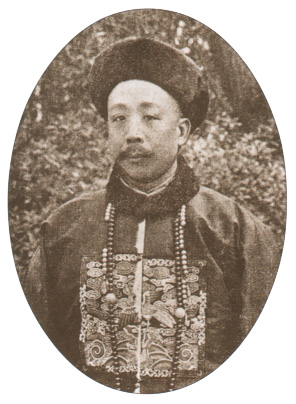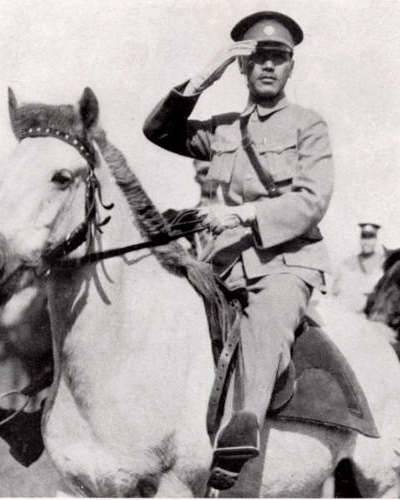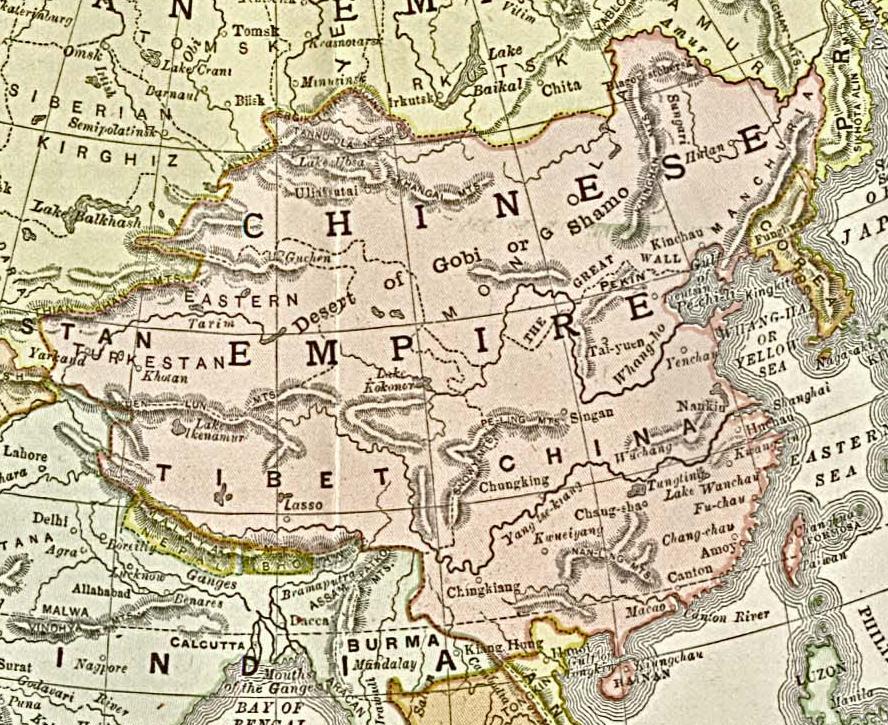|
National Assembly (Beiyang Government)
The National Assembly ( zh, t=國會) was the legislative branch of the Beiyang government during the Republic of China (1912-1949), Republican era of Chinese history. The National Assembly was first founded in 1913, following the 1911 Revolution (China), overthrow of the previous Qing dynasty, as the first free Democracy, democratic legislature in Chinese history. It was disbanded less than a year later as President of the Republic of China, President Yuan Shikai assumed Dictatorship, dictatorial power and Empire of China (1915–16), declared himself the Emperor of China. During the Warlord Era, the National Assembly was resurrected and disbanded more than once as different warlords vied for power and legitimacy. In 1925, the National Revolutionary Army led by Kuomintang entered Beijing (Peking) and completed the Northern Expedition. The National Assembly, along with the Beiyang government, was dissolved and replaced by the Nationalist government led by Kuomintang. The KMT est ... [...More Info...] [...Related Items...] OR: [Wikipedia] [Google] [Baidu] |
Beiyang Government
The Beiyang government was the internationally recognized government of the Republic of China (1912–1949), Republic of China between 1912 and 1928, based in Beijing. It was dominated by the generals of the Beiyang Army, giving it its name. Beiyang general Yuan Shikai gave Sun Yat-sen the military support he needed to overthrow the Qing dynasty and establish the Republic of China in 1912, following the 1911 Revolution. Through his control of the army, Yuan was quickly able to dominate the new Republic. Although the government and the state were nominally under civilian control through the Republic's constitution, Yuan and his generals were effectively in charge of it. After Yuan's death in 1916, the army split into various warlord factions competing for power, leading to a period of civil war called the Warlord Era. Nevertheless, the government maintained its legitimacy among the great powers, receiving diplomatic recognition, foreign loans, and access to tax and customs revenu ... [...More Info...] [...Related Items...] OR: [Wikipedia] [Google] [Baidu] |
Chinese History
The history of China spans several millennia across a wide geographical area. Each region now considered part of the Chinese world has experienced periods of unity, fracture, prosperity, and strife. Chinese civilization first emerged in the Yellow River valley, which along with the Yangtze basin constitutes the geographic core of the Chinese cultural sphere. China maintains a rich diversity of ethnic and linguistic people groups. The traditional lens for viewing Chinese history is the dynastic cycle: imperial dynasties rise and fall, and are ascribed certain achievements. This lens also tends to assume Chinese civilization can be traced as an unbroken thread many thousands of years into the past, making it one of the cradles of civilization. At various times, states representative of a dominant Chinese culture have directly controlled areas stretching as far west as the Tian Shan, the Tarim Basin, and the Himalayas, as far north as the Sayan Mountains, and as far south ... [...More Info...] [...Related Items...] OR: [Wikipedia] [Google] [Baidu] |
Advisory Council (Qing Dynasty)
The Advisory Council (), also known as the Government Advisory Council, Political Advisory Council, or Political Advisory Board, was a preparatory body for the parliament established in 1910. It was part of the New Policies in the late Qing dynasty, of which the Qing court was moving toward the Preparative Constitutionalism, implementation of a constitution. In September 1907, the Guangxu Emperor promulgated a decree on the setting up of the Advisory Council, following by the provincial Consultative Bureaus in October. The Advisory Council was established on 6 November 1906, and formally opened on 10 October 1910, after the first 1909 Chinese parliamentary election, parliamentary election in last October. The council was dissolved on 12 February 1912 along with the end of the Qing dynasty, and was replaced by the Provisional Senate of the Republic of China (1912-49), Republic of China. History After the Boxer Protocol was signed in 1901, the Qing court returned to its capital ... [...More Info...] [...Related Items...] OR: [Wikipedia] [Google] [Baidu] |
Tongmenghui
The Tongmenghui of China was a secret society and underground resistance movement founded by Sun Yat-sen, Song Jiaoren, and others in Tokyo, Empire of Japan, on 20 August 1905, with the goal of overthrowing China's Qing dynasty. It was formed from the merger of multiple late-Qing dynasty Chinese revolutionary groups. History Revolutionary era The Tongmenghui was created through the unification of Sun Yat-sen's Xingzhonghui (Revive China Society), the Guangfuhui (Restoration Society) and many other Chinese revolutionary groups. Among the Tongmenghui's members were Huang Xing, Li Zongren, Zhang Binglin, Chen Tianhua, Wang Jingwei, Hu Hanmin, Tao Chengzhang, Cai Yuanpei, Li Shizeng, Zhang Renjie, and Qiu Jin. In 1906, a branch of the Tongmenghui was formed in Singapore Singapore, officially the Republic of Singapore, is an island country and city-state in Southeast Asia. The country's territory comprises one main island, 63 satellite islands and islets ... [...More Info...] [...Related Items...] OR: [Wikipedia] [Google] [Baidu] |
Nationalist Government
The Nationalist government, officially the National Government of the Republic of China, refers to the government of the Republic of China (1912–1949), Republic of China from 1 July 1925 to 20 May 1948, led by the nationalist Kuomintang (KMT) party. Following the outbreak of the 1911 Revolution, Xinhai Revolution, revolutionary leader Sun Yat-sen was elected to be China's List of Presidents of the Republic of China, provisional president and founded the Provisional Government of the Republic of China (1912), Provisional Government of the Republic of China. To preserve national unity, Sun ceded the presidency to military strongman Yuan Shikai, who established the Beiyang government. After Empire of China (1915-1916), a failed attempt to install himself as Emperor of China, Yuan died in 1916, leaving a power vacuum which resulted in China being divided into several Warlord Era, warlord fiefs and rival governments. They were nominally Chinese reunification (1928), reunified in 1 ... [...More Info...] [...Related Items...] OR: [Wikipedia] [Google] [Baidu] |
Northern Expedition
The Northern Expedition was a military campaign launched by the National Revolutionary Army (NRA) of the Kuomintang (KMT) against the Beiyang government and other regional warlords in 1926. The purpose of the campaign was to reunify China proper, China, which Warlord Era, had become fragmented in the aftermath of the 1911 Revolution. The expedition was led by Generalissimo Chiang Kai-shek, and was divided into two phases. The first phase ended in a 1927 political split between two factions of the KMT: the right-leaning Nanjing Nationalist government, faction, led by Chiang, and the Government of the Republic of China in Wuhan, left-leaning faction in Wuhan, led by Wang Jingwei. The split was partially motivated by Chiang's Shanghai massacre, Shanghai Massacre of Communists within the KMT, which marked the end of the First United Front. In an effort to mend this schism, Chiang Kai-shek stepped down as the commander of the NRA in August 1927, and went into exile in Japan. The sec ... [...More Info...] [...Related Items...] OR: [Wikipedia] [Google] [Baidu] |
Kuomintang
The Kuomintang (KMT) is a major political party in the Republic of China (Taiwan). It was the one party state, sole ruling party of the country Republic of China (1912-1949), during its rule from 1927 to 1949 in Mainland China until Retreat of the government of the Republic of China to Taiwan, its relocation to Taiwan, and in Taiwan Martial law in Taiwan, ruled under martial law until 1987. The KMT is a Centre-right politics, centre-right to Right-wing politics, right-wing party and the largest in the Pan-Blue Coalition, one of the two main political groups in Taiwan. Its primary rival is the Democratic Progressive Party (DPP), the largest party in the Pan-Green Coalition. As of 2025, the KMT is the largest single party in the Legislative Yuan and is chaired by Eric Chu. The party was founded by Sun Yat-sen in 1894 in Honolulu, Hawaii, as the Revive China Society. He reformed the party in 1919 in the Shanghai French Concession under its current name. From 1926 to 1928, the K ... [...More Info...] [...Related Items...] OR: [Wikipedia] [Google] [Baidu] |
National Revolutionary Army
The National Revolutionary Army (NRA; zh, labels=no, t=國民革命軍) served as the military arm of the Kuomintang, Chinese Nationalist Party (Kuomintang, or KMT) from 1924 until 1947. From 1928, it functioned as the regular army, de facto national armed forces of the Nationalist government, Republic of China during the period of Nationalist rule. Following the promulgation of the Constitution of the Republic of China, 1947 Constitution — which established civilian control of the military, civilian control over the military on a de jure basis — it was formally reorganised as the Republic of China Armed Forces. Initially formed from Constitutional Protection Junta, pro-nationalist faction troops after 1917, with assistance from the Soviet Union, the NRA was created as an instrument for the Nationalist government to unify China during the Warlord Era. It went on to fight major military conflicts, including the Northern Expedition against the Beiyang warlords, the encirclem ... [...More Info...] [...Related Items...] OR: [Wikipedia] [Google] [Baidu] |
Warlord Era
The Warlord Era was the period in the history of the Republic of China between 1916 and 1928, when control of the country was divided between rival Warlord, military cliques of the Beiyang Army and other regional factions. It began after the death of Yuan Shikai, the President of the Republic of China, President of China after the Xinhai Revolution had overthrown the Qing dynasty and established the Republic of China (1912–1949), Republic of China in 1912. Yuan's death on 6 June 1916 created a power vacuum which was filled by Warlord, military strongmen and widespread violence, chaos, and oppression. The Nationalist Kuomintang (KMT) government of Sun Yat-sen, based in Guangzhou, began to contest Yuan's Beiyang government based in Beijing for recognition as the legitimate government of China. The most powerful cliques were the Zhili clique led by Feng Guozhang, who controlled several northern provinces; the Anhui clique led by Duan Qirui, based in several southeastern provinces ... [...More Info...] [...Related Items...] OR: [Wikipedia] [Google] [Baidu] |
Emperor Of China
Throughout Chinese history, "Emperor" () was the superlative title held by the monarchs of imperial China's various dynasties. In traditional Chinese political theory, the emperor was the " Son of Heaven", an autocrat with the divine mandate to rule all under Heaven. Emperors were worshiped posthumously under an imperial cult. The lineage of emperors descended from a paternal family line constituted a dynasty, and succession in most cases theoretically followed agnatic primogeniture. The emperor of China was an absolute monarch. During the Han dynasty, Confucianism gained sanction as the official political theory. The absolute authority of the emperor came with a variety of governing duties and moral obligations; failure to uphold these was thought to remove the dynasty's Mandate of Heaven and to justify its overthrow. In practice, emperors sometimes avoided the strict rules of succession and dynasties' purported "failures" were detailed in official histories written by ... [...More Info...] [...Related Items...] OR: [Wikipedia] [Google] [Baidu] |
Empire Of China (1915–16)
Chinese Empire (), or Empire of China, refers to the realm ruled by the Emperor of China during the era of Imperial China. It was coined by western scholars to describe the Ming and Qing dynasties (or imperial Chinese dynasties in general). Another term was the "Celestial Empire", in reference to the status of the emperor as the Son of Heaven. In 221 BC, China was unified under an emperor for the first time, and various imperial dynasties ruled China for a total of two millennia since then, including the Qin, Han, Jin, Sui, Tang, Song, Yuan, Ming, and Qing, among others. Etymology and usage The word "China" has been used in English since the 16th century. China was previously known to Europeans as Cathay, as used in Marco Polo's book on his travels in the 13th century (during the Yuan dynasty), and it took a while for most Europeans to be convinced that Cathay referred to China or North China. The term "Chinese Empire" first appeared in the 16th century (late Ming ... [...More Info...] [...Related Items...] OR: [Wikipedia] [Google] [Baidu] |







